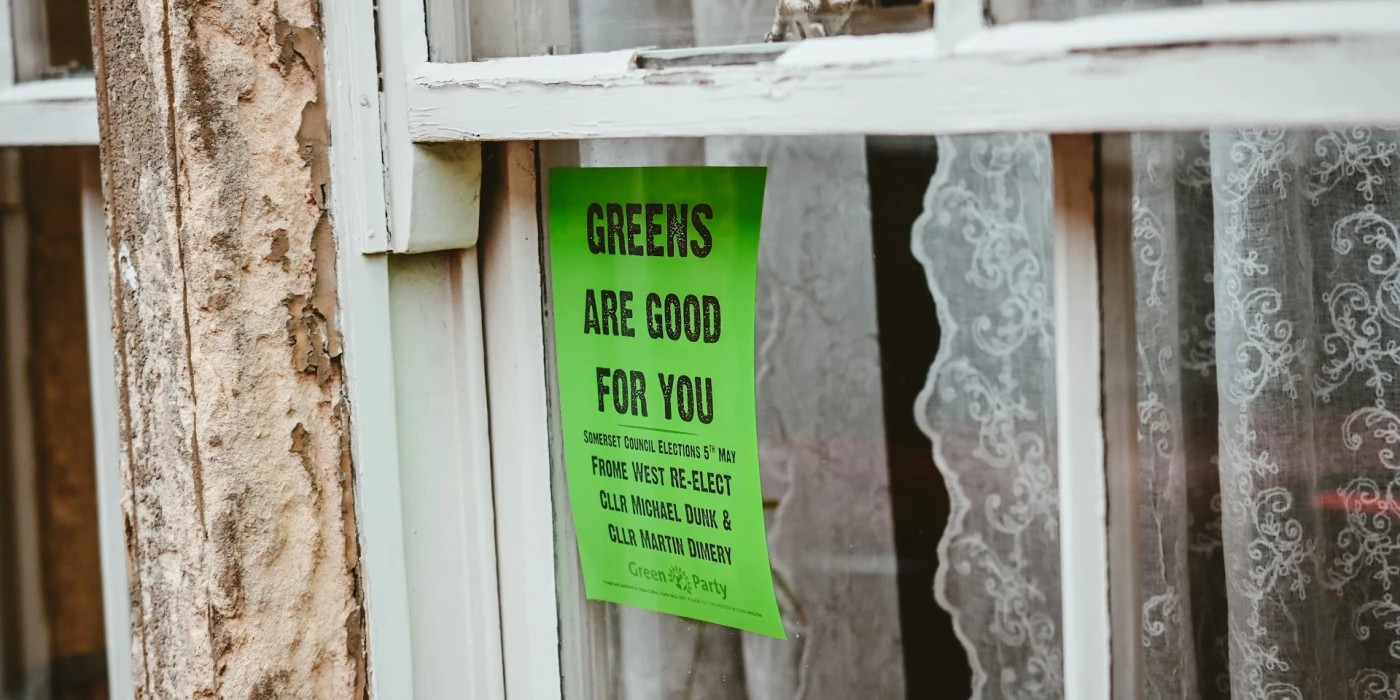Author
Joshua Alston
Joshua Alston is a historian and policy professional who has held various roles within the Green Party. He is currently a member of their policy development committee.
Opinions
Programmes

The Greens will be in a buoyant mood when they welcome their new leader, Zack Polanski, their new deputies Rachel Millward and Mothin Ali, and 12,000 new members (from a total of 72,000) to their conference in Bournemouth.
The new leadership and new members bring with them the perennial question: Can the Greens break through and become established as a main party, holding a significant parliamentary voting block?
According to yougov, the party is polling at 12%, up from 7% in summer 2024. One recent poll had them only 4% behind Labour . If this level of momentum is maintained it is entirely feasible that the party might be polling in the high teens by the next election in 2029. Given the balkanised nature of the political landscape, this could mean they are the second largest party (by vote share). With the right organisation, this could put it in a position to win a significant number of seats.
How significant a voting bloc depends on the success of these new leaders, and their strategy of ‘eco-populism’ and the ways the party integrates these new members.
The New Leaders
While the previous leadership election was framed in some places as a battle between the left and the right of the party, this was not quite accurate. Green leaders don’t make policy, and even if they did, there was vanishingly little in between the Ramsay and Chowns, and Polanski. We shouldn’t expect Polanski’s and the new deputies to usher in dramatic changes of policy, although we can expect motions on left issues, such as renters’ rights, trans rights and Gaza, to do very well at the Green Party conference this week.
The leadership election was fundamentally a debate over styles. Polanski and his deputies promised a more dynamic, angrier, and ‘eco-populist’ comms style, whereas Ellie and Adrian favoured a more cautious and traditional style, common to most Westminster politicians.
Polanski clearly has an impressive understanding of what works in the current media landscape, where traditional media appearances are more about providing a moment to be shared on Instagram or TikTok, rather than winning over the live viewership of Newsnight. This means combining dynamic and clippable traditional media appearances with more attention to the more democratic non-traditional media platforms such as podcasts.
The attempt to change the Greens from a party which has benefitted from being seen as nice, sensible and fundamentally unthreatening, to being ‘eco-populist’ has some risks.
The Greens are looking to make gains in 40 constituencies where they came second, the vast majority of which are inner city seats facing large Labour majorities. The gamble behind eco-populism is that through an angrier, more clearly anti-establishment communications style, they can put together a coalition of the young, ethnic minority, and low-income urban voters and win more seats like Bristol Central.
However, the Party’s MPs are currently evenly split between those who represent young, multiracial inner-city constituencies (Brighton and Bristol) and those that represent older, rural constituencies (Suffolk, Herefordshire). The risk is that an angrier approach alienates half of the existing coalition, while not gaining enough to win a significant number of new urban MPs.
Ultimately whether the Greens can hold their coalition together while picking up enough new votes to make significant breakthroughs will depend not just on the new leadership, but on their ground campaigning, holding on to votes in rural areas by hammering home their core messages about the failure of rural public services, such as buses and rural healthcare, while picking up new voters in urban constituencies, on public services, or other issues such as immigration, trans rights and Gaza.
New Members
The 17000 new members who have joined since March represent the largest growth on any party, and the success of the Greens depends on how well they can use them. Unlike the major parties, which have based their success on a high national vote share, there are very few seats the Greens should win based on national share alone. They have instead depended on dynamic and committed local campaigning. Without big corporate donors, this needs members.
Increasing the party’s membership by over a quarter should be a boon for the party’s chances. However, the last Green membership surge (in 2015) took a few years to translate in to gains in councillor numbers, as new members will not necessarily immediately have the skills and knowledge to immediately become effective campaigners. The party is in a better position to utilise these new members. There are over 850 local councillors, and better infrastructure in more areas of the country, meaning that it will be easier to find new members roles right away.
There’s the added element of culture shock, where there are lots of new members coming from other political parties with different internal cultures. This is particularly the case with the Labour party, where its own factional myopia and incessant infighting has been such a barrier to the success of the party as a whole.
Within the Greens, a new grouping Greens Organise has been created to help facilitate and integrate left-wing new members to the party and direct them towards useful roles. While superficially reminiscent of Momentum, they are currently less interested in factionalism for its own sake and keener on developing new activists to take important roles in the party.
Will the Green Party end up with four or forty seats come the next election? The answer to this depends on the success of their new leaders in continuing to grow their membership base, and whether the Party is able to turn these new members into new activists.